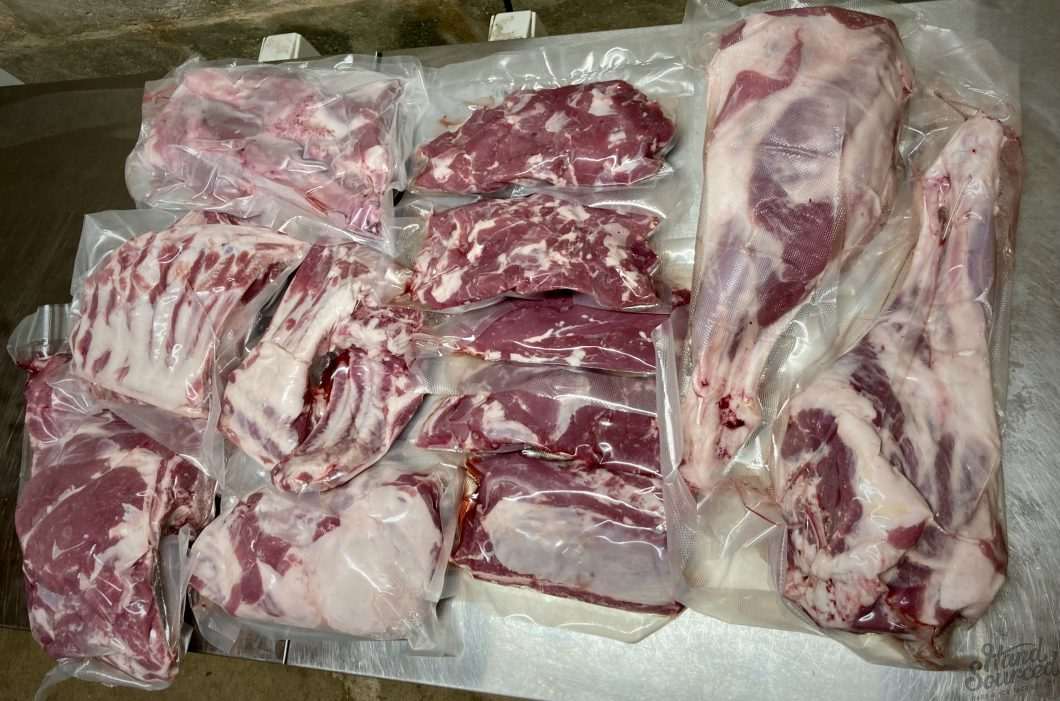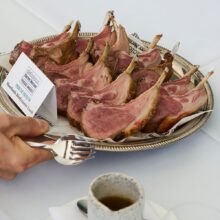Jo Stewart (aka the gourmet Goat Lady) grows Boer goats on the beautiful farm in Collie, New South Wales.
Here’s how I broke down my 6 primals with just a boning knife, a cleaver, and a few glasses of wine.

- 2 each foreshanks
- 2 each tenderloin
- 2 each leg roasts
- 2 each standing rib rack roast
- 2 x breast fillet rolled
- 2 each backstraps
- 2 each shoulder roasts
- neck
- diced meat
- upper rib bones (for spicy goat ribs!)
- little packet of trim, a little packet of fat, and a nice packet of bones.
Unboxing:
The goat meat is fresh, and packed tightly into a food safe carton and liner. It’s come from the butcher to the airport to the next airport to me. So, about 8 hours from butcher to my kitchen. The meat is icy cold, and smells fresh, and, well, goaty.
Inside the carton are 2 x shoulders with neck meat, 2 x legs, and 2 x midsections. Everything is presented beautifully, well trimmed, and vibrant pink.



Dealing with it:
As mentioned, I broke this down with just my boning knife and a cleaver. There were no bones to break, I kept my cuts bone in.

The foreshanks were separated from the shoulder by chopping through the cartilage.
- 2 x foreshanks
I took off the neck (great for roasts) and kept 2 shoulder roasts on the bone.
- 2 x shoulder roasts
- 1 x neck roast
Legs stayed whole.
- 2 x leg roasts
Ribs separated from the rib section (this took the longest). Cut down further to give me standing rib roasts, lots of of diced meat, 2 beautiful belly flaps to roll for slow roasting, spare ribs for spicy ribs, and trim.
- 2 x standing rib rack roasts
- diced meat
- 2 x belly flaps for rolled breast roasts
- spare ribs for spicy ribs
- 2 x back straps
- 2 x tenderloins
I also ended up with
- extra trim (I’ll chuck it in a curry)
- meaty bones (for stew or curry)
- little packet of goat fat (for cooking spuds, making soap, whatever!)
Everything was cryovacked and popped into the freezer.
Here’s the haul, below.

If you are interested in ordering goat, contact me here.






Leave a Reply